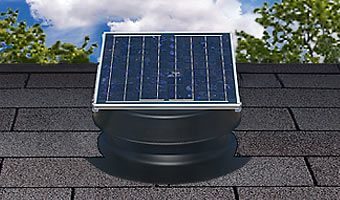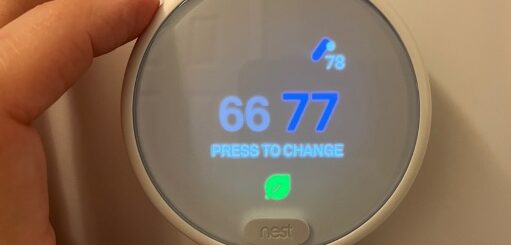Are Solar-Powered Attic Fans Worth the Cost?

As homeowners strive to enhance energy efficiency and reduce utility costs, the question of whether solar powered attic fans are worth the extra investment arises. Attic fans play a crucial role in regulating temperature and moisture levels in the attic space, significantly impacting a home’s overall energy consumption and comfort. This article aims to delve into the benefits of solar powered attic fans in comparison to no attic fan or attic fans powered by home electricity, examining their cost-effectiveness and environmental impact.
Enhanced Energy Efficiency: Solar powered attic fans harness the sun’s energy to power their operation, making them a sustainable and cost-effective solution. These fans work by expelling hot air from the attic, reducing the temperature inside the space. By doing so, they alleviate the strain on the home’s cooling system, leading to potential energy savings and lower utility bills1. Unlike attic fans powered by home electricity, solar powered fans do not rely on fossil fuel-generated electricity, further reducing carbon emissions and environmental impact.
Studies have shown that solar powered attic fans can reduce the temperature in attics by up to 40 degrees Fahrenheit, resulting in decreased cooling costs and improved energy efficiency. The use of solar power eliminates the need for grid electricity, making solar attic fans a sustainable alternative that contributes to a greener future1.
Cost Comparison: While solar powered attic fans may have a higher upfront cost compared to no attic fan or electric-powered fans, they offer long-term savings that make them a worthwhile investment. Traditional attic fans powered by home electricity can significantly contribute to a household’s energy consumption, leading to higher utility bills. Conversely, solar powered fans operate without drawing power from the grid, resulting in reduced electricity costs. Over time, these energy savings can offset the initial investment and yield financial benefits.
According to Energy Sage, a leading authority on solar energy, the cost of installing a solar powered attic fan can range from $500 to $1,500, including installation. Although this cost may be higher than that of traditional attic fans, the long-term energy savings can be substantial, potentially recouping the initial investment within a few years2.
Environmental Advantages: Solar powered attic fans align with sustainable practices by reducing the reliance on non-renewable energy sources. As solar panels generate electricity from sunlight, the environmental impact associated with electricity generation from fossil fuels is mitigated. By installing solar powered fans, homeowners contribute to a greener future by reducing their carbon footprint and supporting renewable energy initiatives. The environmental benefits of solar powered attic fans extend beyond individual households, making them a responsible choice for a sustainable planet.
Solar Energy Industries Association (SEIA) emphasizes the importance of renewable energy technologies like solar power in combating climate change. Solar attic fans not only reduce energy consumption but also help reduce greenhouse gas emissions and dependence on fossil fuels, contributing to a cleaner and more sustainable environment3.
Increased Lifespan: Solar powered attic fans tend to have a longer lifespan compared to electric-powered counterparts. Traditional attic fans can be prone to motor burnouts due to continuous operation and reliance on grid electricity. In contrast, solar powered fans have a simpler design and fewer moving parts, resulting in improved durability and reduced maintenance requirements. The extended lifespan of solar powered fans adds to their cost-effectiveness, as they offer reliable and efficient attic ventilation for an extended period.
A study by the Building America Program found that solar powered attic fans typically have a lifespan of 20 years or more, while electric-powered fans often need replacement within 10 to 15 years. The increased durability and longevity of solar powered fans further support their cost-effectiveness and reliability4.
Tax Incentives and Rebates: In many regions, homeowners can benefit from tax incentives and rebates for installing solar powered attic fans. These incentives aim to encourage the adoption of renewable energy solutions and help offset the initial cost. By taking advantage of these financial incentives, homeowners can further enhance the cost-effectiveness of solar powered attic fans and potentially recoup a significant portion of their investment.
The Database of State Incentives for Renewables & Efficiency (DSIRE) provides a comprehensive database of available incentives, including the Residential Renewable Energy Tax Credit in the United States. This tax credit allows homeowners to claim a percentage of the cost of their solar powered attic fan installation on their federal taxes, resulting in additional savings5.
Solar powered attic fans present a compelling case for their value and cost-effectiveness when compared to no attic fan or electric-powered fans. By harnessing solar energy, they provide enhanced energy efficiency, reduce utility bills, and minimize environmental impact. Despite a higher initial investment, the long-term savings, extended lifespan, and potential tax incentives make solar powered attic fans a smart choice for homeowners seeking to improve their home’s energy efficiency and reduce their carbon footprint.
References:
- U.S. Department of Energy. (2021). Attic Ventilation. energy.gov. [Online]. Available: https://www.energy.gov/energysaver/
- Energy Sage. (2021). Solar Attic Fans: What to Know Before You Buy. EnergySage. [Online]. Available: https://www.energysage.com/energy-efficiency
- Solar Energy Industries Association. (2022). Solar Technology. seia.org. [Online]. Available: https://www.seia.org.
- Fitch, J., et al. (2019). Building America Best Practices Series Volume 8: Builders Challenge Guide to 40% Whole-House Energy Savings in the Cold and Very Cold Climates. Building America. [Online]. Available: https://www.energy.gov/eere/buildings.
- Database of State Incentives for Renewables & Efficiency (DSIRE). (2022). Residential Renewable Energy Tax Credit. dsireusa.org. [Online]. Available: https://www.dsireusa.org.


 Rob McCandless
Rob McCandless



Best vie i have ever seen !
Hi. Thanks for commenting. Can you clarify what you mean by “vie”? Thank you.